 |
 |
 |
 |
 |
 |
 |
 |
 |
 |
 |
 |
 |
 |
 |
 |
 |
 |
 |
 |
 |
 |
 |
 |
 |
 |
 |
 |
 |
 |
 |
 |
 |
 |
 |
 |
 |
 |
 |
 |
 |
 |
 |
 |
 |
 |
 |
 |
 |
 |
 |
 |
 |
 |
 |
 |
 |
 |
 |
 |
 |
 |
 |
 |
 |
 |
 |
 |
 |
 |
 |
 |
 |
 |
 |
 |
 |
 |
 |
 |
 |
 |
 |
 |
 |
 |
 |
 |
 |
 |
 |
 |
 |
 |
 |
 |
 |
 |
 |
 |
|
Station One Reg'd Kennels Phone:1-506-433-6601 Sussex, New Brunswick Email:Station One Reg'd Kennels Email: Webmistress |
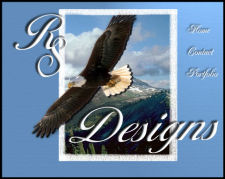 Puppies have a 6 week Pet Secure Insurance health voucher for $750. Further coverage can be obtained through Pet Secure.
|
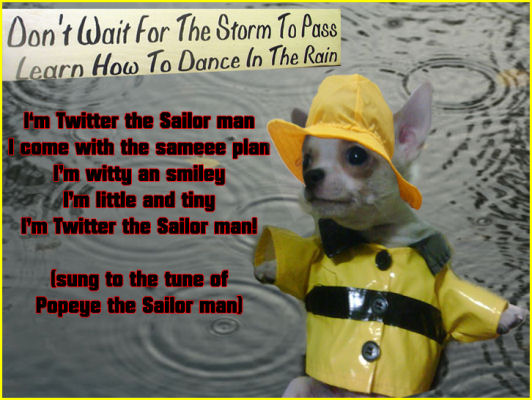
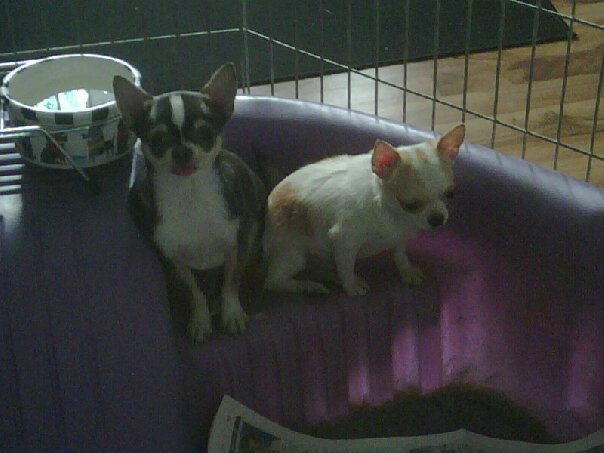


A spritely pet, alert and spirited, the Chihuahua is the ideal companion for the apartment dweller or couch potato.
Personality plus in a small package, these little dogs are devoted to their owners and willing to please!

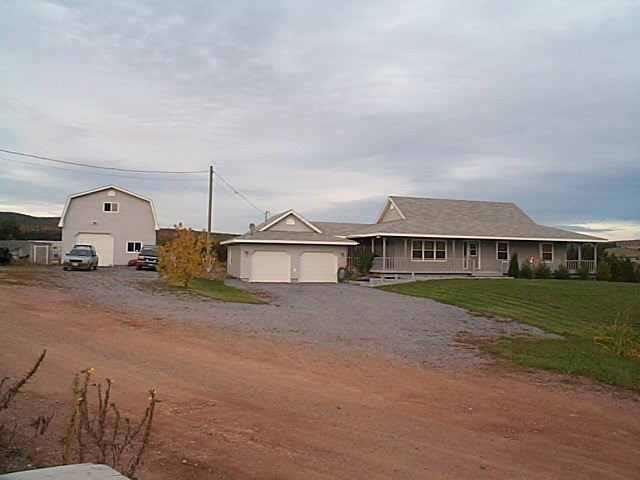
Station One Reg'd Kennels's goal is to meet every customer's need, whether you are searching for a top quality dog to show, or a wonderful companion to love.
All of our dogs are CKC Registered,and are parents are Eye-certified. We provide a 2 year written Health guarantee. Puppies come with first needles, started on deworming program, microchipped, and have a 6 week Pet PLan insurance for $750.00. Puppies are Aptitude tested before going to new homes.
We offer stud service to approved bitches.
With 25+ years of training experience, and extremely knowledgeable in dog behavioral science, Station One owners offer you full after sales support.

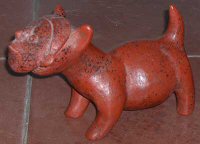 The little dogs are thought to have come from the Valley de Allende, in the State of Chihuahua in Mexico from where they acquired their name. Chihuahuas were the sacred dogs of the Mayan Indians and the Toltecs and can be traced back to between the 7th and 9th centuries AD. It is written that the Aztecs followed the Toltecs and that they continued to develop the breed. When an Aztec Indian chief died, all his belongings, including his little dog, were burnt. Legend has it that when the Indian crossed the nine deadly rivers of the fearful underworld, the little holy dog with the symbolic cotton cord tied around his neck would be waiting on the furthest bank for his master. As soon as the little dog recognized him he would swim across the turbulent waters and guide his master's soul to safety. Depicted in the photo to the right is an example of the statue wearing a human mask. Again, This would be put in the grave with the newly dead person, so the dog would guide the person into the next world. To see more of these statues, go Here.
The little dogs are thought to have come from the Valley de Allende, in the State of Chihuahua in Mexico from where they acquired their name. Chihuahuas were the sacred dogs of the Mayan Indians and the Toltecs and can be traced back to between the 7th and 9th centuries AD. It is written that the Aztecs followed the Toltecs and that they continued to develop the breed. When an Aztec Indian chief died, all his belongings, including his little dog, were burnt. Legend has it that when the Indian crossed the nine deadly rivers of the fearful underworld, the little holy dog with the symbolic cotton cord tied around his neck would be waiting on the furthest bank for his master. As soon as the little dog recognized him he would swim across the turbulent waters and guide his master's soul to safety. Depicted in the photo to the right is an example of the statue wearing a human mask. Again, This would be put in the grave with the newly dead person, so the dog would guide the person into the next world. To see more of these statues, go Here.
Statues of Chihuahuas have been found amongst the artifacts of early Indians. These statues have come to be known as the Pottery Dogs of Colima and thought to depict the hairless edible breed, an ancestor to the modern tiny Chihuahuas. The Spanish were to conquer Mexico in the 16th Century and it is reasonable to assume that specimens of the smooth coat Chihuahua were returned to Europe. Some believe that these were crossed with long coated Spaniels, little Italian Spaniels, or 'comforter' as they were often called which in turn produced the little Papillon of later years. Many of the little dogs resembling Chihuahuas have been depicted in oil, particularly in Italy and it is well known that a similar variety of smooth coat Chihuahua existed on the island of Malta.
It is interesting to note that by 1935 in the U.S.A. the breed was definitely showing the results of mixed breeding, particularly with terrier breeds. Mrs. Ida Carrat, one of the greatest pioneers of the breed in the USA traveled many miles looking for litters of Chihuahuas and mentions that for years she interbred the smooth coat variety with Yorkshire Terriers, Pomeranians, Papillons and Poodles. She then crossed the offspring back to the Chihuahua and only after about three generations it appeared that a Chihuahua similar to the long coat as we know it today evolved and was eventually registered in the USA. It was not until 1952 in the U.S.A. that long coats were separated from smooth coats and the Long Coat Chihuahua Club founded. The Chihuahua Club of America was founded in 1923.Long coats were unknown in Mexico before 1959, but original smooth coat registrations go back to 1934.
Chihuahuas were known to have been kept as pets in the U.K. as early as 1850 but they were not registered in the U.K. until 1907. Up until 1940 in the U.K. there were only 59 registered. During the Second World War a number of dogs perished so that by 1949 there were only eight Chihuahuas registered in the U.K. It was not until 1954 that the first challenge certificates were issued for the breed in Glasgow, Scotland and in 1965 Chihuahuas were classified as two varieties and judged separately as they are to this day. Cross mating of the two varieties was allowed in the U.K. until about 1978 when it was discontinued.
Excerpts from:
The Complete Chihuahua Encyclopaedia by Hilary Harmar.
The Chihuahua by Thelma Gray.
This is the Chihuahua by Maxwell Riddle.

Short Coat ChihuahuaOrigin and PurposeThe world's smallest dog, the Chihuahua is the breed of dog considered truly indigenous to the Western Hemisphere. The breed?s name indicates its ancestors came from the State of Chihuahua in Mexico. However, the breed?s origins more properly belong to the whole of the country. It is thought that the Chihuahua is derived from an earlier breed known as Techichi, popular during the Toltec period, around the 7th century A.D. It is said that the Long Coat variety was developed entirely in the United States by crossing the Short Coat to the Papillon and the Pomeranian. The Chihuahua has evolved primarily as a human companion. General AppearanceA graceful, alert, swift-moving little dog with saucy expression. Compact, and with terrier-like qualities. TemperamentSaucy, superior intelligence, generally reserved towards strangers. SizeA well-balanced little dog not to exceed 6 lb. (2.7 kg), 2-4 lb. (1-2 kg) preferable. Coat and ColourIn the smooth, the coat should be soft in texture, close and glossy. (Heavier coats with undercoats permissible.) Coat placed well over body with ruff on neck, and more scanty on head and ears. Any colour - solid, marked or splashed. HeadSkull: Well-rounded apple-dome skull, with or without molera. Cheeks and jaws lean. Muzzle moderately short, slightly pointed. Nose self-coloured in blonde types, or black. In moles, blues, and chocolate, they are self-coloured. In blonde types, pink nose permissible. Mouth: Teeth level or scissors bite. Eyes full, but not protruding, balanced, set well apart - dark, ruby or luminous. (Light eyes in blond types permissible.) Ears large, held erect when alert, but flaring at the sides at about an angle of 45 degrees when in repose. This gives breadth between the ears. NeckSlightly arched, gracefully sloping into lean shoulders, may be smooth in the very short types, or with ruff about neck preferred. ForequartersShoulders lean, sloping into a slightly broadening support, well up, giving balance and soundness. Upper arm set on to give chestiness and strength of forequarters, yet not of the bulldog chest. Lower arm - forelegs straight, set well under, giving free play at the elbow. Pasterns fine. Feet - a dainty small foot with toes well split up, but not spread, pads cushioned, with nails moderately long. (Neither the hare nor the cat-foot.) BodyTopline - level back (never down or low), slightly longer than height. Chest - plenty of brisket. Ribs rounded (but not too ?barrel-shaped?). Loin well muscled. Croup in balance with rear assembly. Abdomen - slight tuck up. HindquartersHipbone well covered. Upper thigh muscular, in balance with front assembly. Lower thigh muscular, in balance with front assembly. Hocks well apart, turning neither in nor out, well let down, with firm sturdy action. Stifle bend - well bent and strong. Feet - a dainty small foot with toes well split up, but not spread, pads cushioned, with nails moderately long. (Neither the hare nor the cat-foot.) TailModerately long, carried sickle either up or out, or in a loop over the back with tip just touching the back. (Never tucked under.) Hair on tail in harmony with the coat of the body, preferred furry. GaitA graceful, swift and flowing straight forward movement with good reach and strong drive. Serious FaultsUndershot, overshot, weighing more than 6 lb. (2.7 kg); bobtail. DisqualificationsCropped tail, broken down or cropped ears. Scale of Points
The Long-Coated variety of the Chihuahua is judged by the same standard as the Short-Coated variety, except for the following: CoatIn the Long Coats the coat should be of a soft texture, either flat or slightly wavy, with undercoat preferred. Ears fringed (heavily fringed ears may be tipped slightly, never down). Feathering on feet and legs, and pants on hindlegs. Large ruff on neck desired and preferred. Tail full and long (as a plume). DisqualificationsCropped tail, broken down or cropped ears, too thin a coat that resembles bareness. Scale of Points Same as Short Coat. |

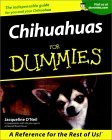 | Chihuahuas For Dummies Author: Jacqueline O'neil Brand: For Dummies ISBN: 0764552848 |
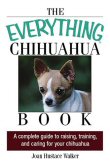 |
The Everything Chihuahua Book: A Complete Guide to Raising, Training, And Caring for Your Chihuahua Author: Joan Hustace Walker Brand: Adams Media Corporation ISBN: 1593375271 |

© Station One Reg'd Kennels & Cattery
Website Debut- 1999-2011